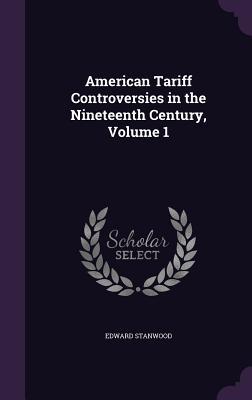This work has been selected by scholars as being culturally important, and is part of the knowledge base of civilization as we know it. This work was reproduced from the original artifact, and remains as true to the original work as possible. Therefore, you will see the original copyright references, library stamps (as most of these works have been housed in our most
Read American Tariff Controversies in the Nineteenth Century, Volume 1 - Edward Stanwood file in ePub
Related searches:
American Tariff Controversies in the Nineteenth Century.
American Tariff Controversies in the Nineteenth Century, Volume 1
The Tariff of Abominations: The Effects US House of
The South Carolina Nullification Controversy [ushistory.org]
The Nullification crisis (article) Khan Academy
Tax History Project -- The Second American Party System and the
American Tariff Controversies in the Nineteenth - Google Books
American Tariff Controversies in the Nineteenth - Google Libri
Tariffs are no longer China's biggest problem in the trade war - CNBC
Canada and the American Tariff: CQR
The Nullification Crisis US History I (AY Collection) - Lumen Learning
The tariff of 1824 was a protective tariff in the united states designed to protect american industry from cheaper british commodities, especially iron products,.
Once andrew jackson moved into the white house, most southerners expected him to do away with the hated tariff of 1828, the so-called tariff of abominations.
1816 the 14th congress passed the tariff act of 1816 levying a series of 25 percent duties designed to encourage domestic manufacturing.
American tariff controversies in the nineteenth century, volumen2.
In the prairie provinces objections were made to the proposed duties on cattle, hides and skins, and leather, while comment in ontario and quebec was largely.
The tariff of 1828 raised taxes on imported manufactures so as to reduce foreign competition with american manufacturing.
Thirty years before the civil war broke out, disunion appeared to be on the horizon with the nullification crisis.
Economic growth during this paper examines this frequently mentioned but controversial question.
Nevertheless, president john quincy adams approved the bill on may 19, 1828, helping to seal his loss to andrew jackson in the 1828 presidential election.
This tariff benefited american producers of cloth — mostly in the north. But it shrunk english demand for southern raw cotton and increased the final cost of finished.

Post Your Comments: